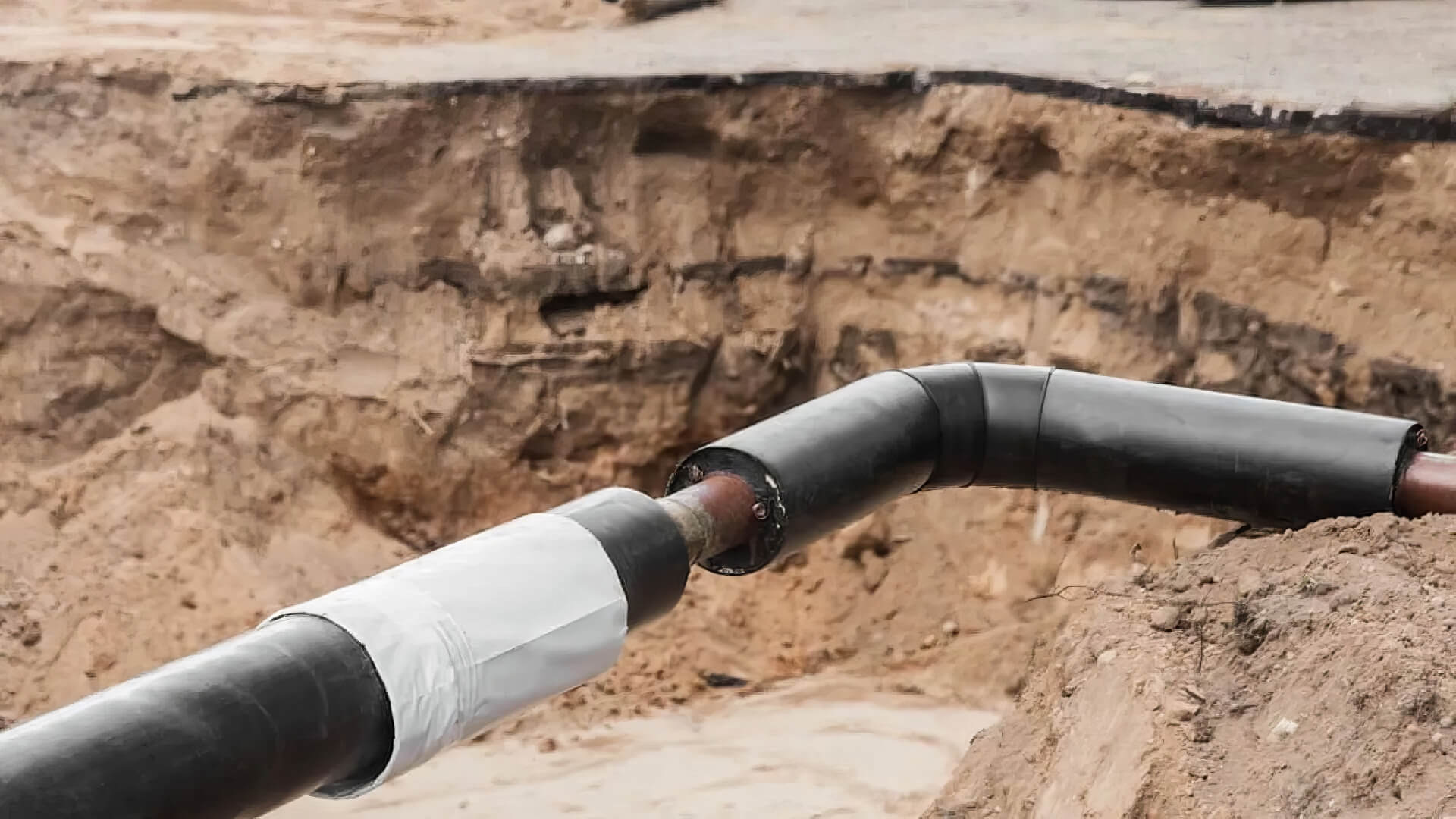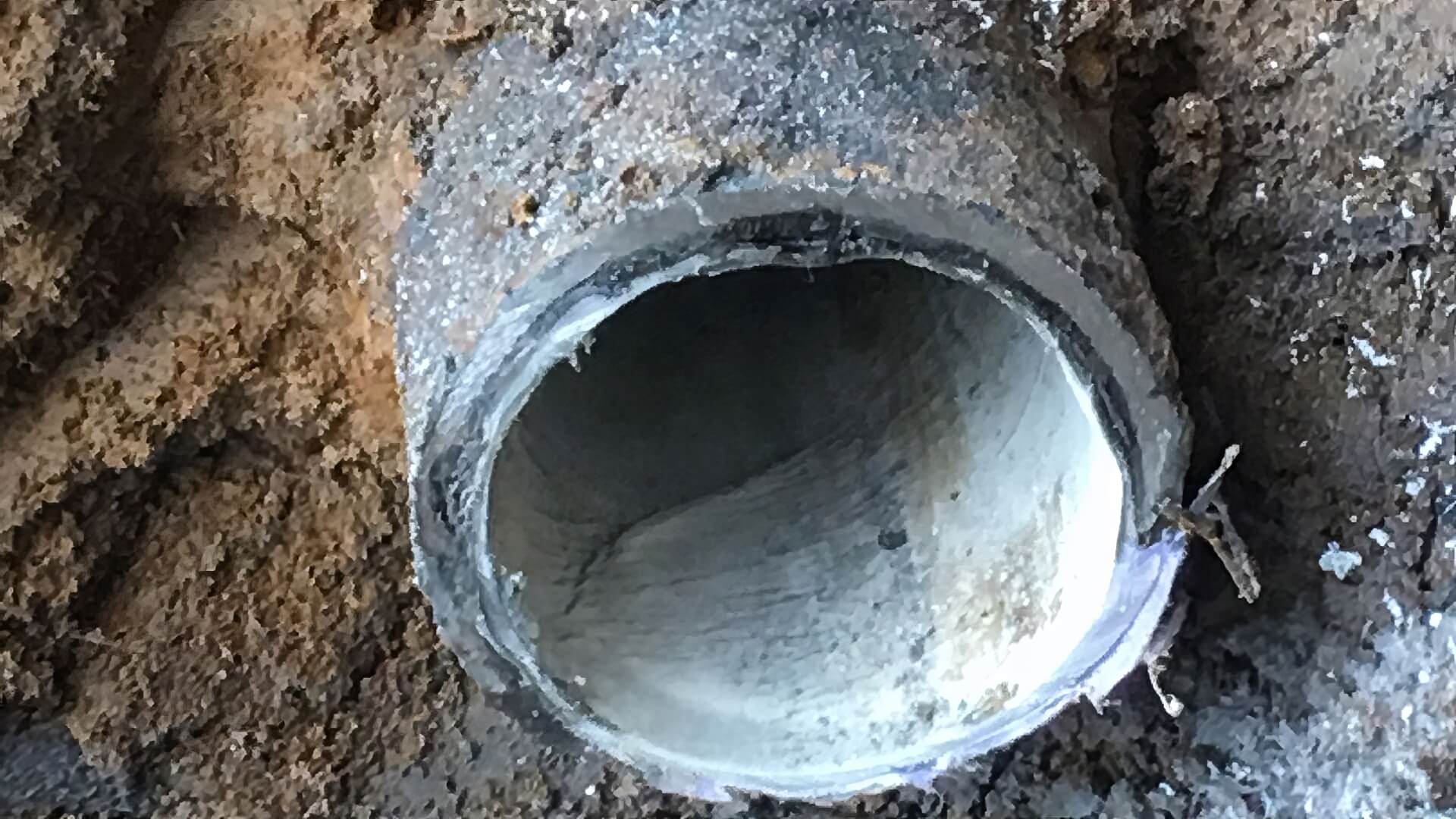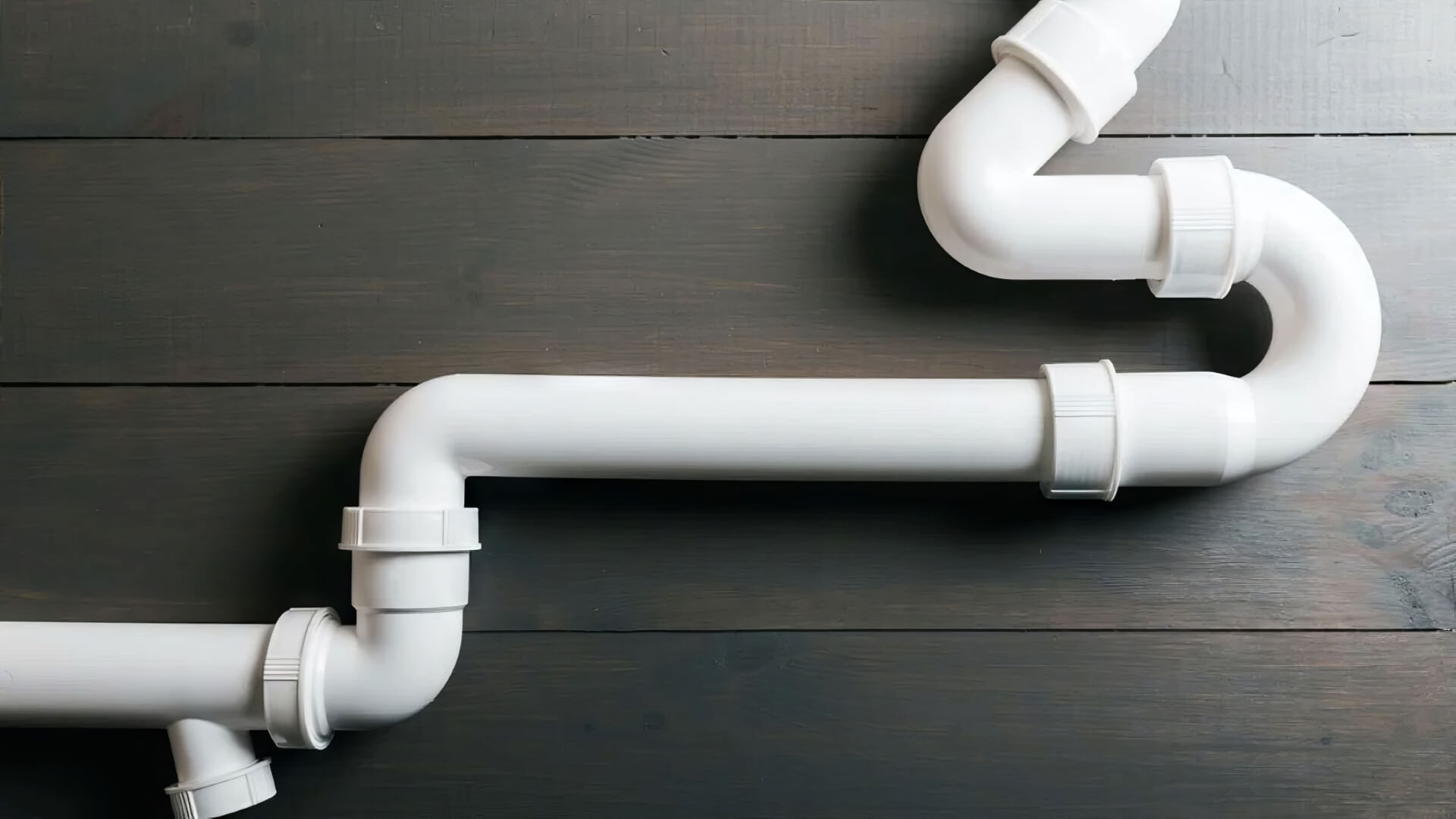Understanding Your Gas Meter and Supply Valve
Gas meters are vital for measuring usage and may be situated either outdoors or indoors on your property. The gas meter pairs with a supply valve to regulate gas flow into your home. Familiarity with the shutoff valve’s location and operation is critical when you need to turn off your gas during emergencies.
All natural gas meter assemblies are equipped with a main shutoff valve crucial for cutting off your home’s gas supply. If you smell gas or question whether to turn off your appliance’s gas supply, crucially turn the valve 90 degrees to the 'off’ position, so it’s at a right angle to the pipe. This stops all gas flow beyond the gas main box.
It’s essential to possess working knowledge of your gas meter and supply valve to promptly disable the gas supply in emergencies, typically until a licensed gas fitter arrives. You can activate the shut off valve to prevent risks while awaiting a licenced technician’s assistance. It also enables safe execution of basic tasks such as appliance maintenance or replacement.
Locating Your Gas Meter
In Beverley Park, Sydney, gas metres and the associated gas pipes are often positioned outside in a meter box, tucked under staircases, or in utility areas for appliances within your property, such as the kitchen, garage, or laundry room. However, placement may vary depending on the configuration of your gas line.
If you’re unaware of your gas metre’s location, check areas protected from the weather first, as they could be near a gas cylinder. Additionally, seek out the natural gas meter and its connecting pipe on the exterior of your home. Tracing their path inside may lead you to the metre.
For confirmation, refer to the Department of Energy guidelines or examine your gas provider’s installation documents. Diagrams should indicate the meter’s position. Licensed technicians should also be able to locate and show you the meter during service visits.
Precisely identifying where your gas meter and supply valve are located is critical, especially when safe gas shutoff is required. This allows swift shutdowns in gas leak emergencies while awaiting professional help. Take time to locate yours if unknown.
Identifying the Gas Shutoff Valve
The gas shutoff valves are usually affixed directly to the gas metre or situated along the pipe just beyond the metre. It’s operated using a flat handle or lever, critical for those moments when you must cut off gas supply to your home, by turning it 90 degrees to the perpendicular ‘off’ position.
Visually inspect your individual valve to understand its design. Handles, which may resemble arrow-shaped metal bars, pivot, and levers typically slide. The shutoff valve’s function remains the same.
With the valve in the 'off’ position, gas flow is halted, helping to ensure safety until professionals arrive, even if appliances are accidentally left on. A professional should verify that the supply is off following gas works or leaks, and then restore it after completing repairs and system inspections, with a focus on the meter. Never try turning gas on yourself.
Step-by-Step Guide to Turning Off Your Gas
- Rotate the main valve clockwise to shut off all gas appliances including stoves, heaters, and the hot water system, making sure knobs are turned completely.
- Locate the pilot light on appliances and gently blow them out if lit. Use a flashlight to double check none are still burning.
- Find your gas metre to quickly shut off gas supply to your property. Identify the gas shutoff valve close to your meter.
- Carefully turn the shutoff valve’s handle or twist the tap 90 degrees to the ‘off’ position, perpendicular to the pipe.
- Contact your gas company and a licensed technician to effectively complete the gas shutoff process, including additional safety measures and restoration.
- Never attempt to turn the gas off or back on by yourself. Always wait for professional assistance.
Turning Off All Gas Appliances
Ensure all appliances, including LPG devices, are turned off before shutting the main gas supply valve. This includes ovens, stoves, your hot water system and space heaters that utilise natural gas or LPG.
Turning off appliances first prevents potential damage if gas flow ceases while equipment is still on. It also eliminates the risk of gas leaks occurring from unused appliances during shutdowns.
Turn off appliances using knobs or switches, then carefully extinguish any pilot lights near burners. Verify that no flames remain lit on appliances by inspecting with a flashlight.
Completing this step is crucial for safety, especially if you’re unsure about how to turn off your gas. It also allows gas companies to easily restart appliances after reopening valves.
Closing the Shutoff Valve at the Meter
After ensuring all gas appliances are off and pilot lights extinguished, you’re set to close the main shutoff valve located at your gas metre. Ceasing the gas supply to your property is a key step, and knowing the valve’s location is important.
Find the valve handle or lever connected to the meter assembly or adjacent piping. Carefully turn this 90 degrees in either direction until perpendicular to the pipe itself. This is the ‘off’ position.
Visually confirm the valve position to ensure gas supply is fully closed. Attempting to turn further and meeting firm resistance means gas cutoff is complete.
With appliances off and the main valve in the supply off position, no gas can now enter the home. Notify gas emergency services and professionals before restoration.
Extinguishing All Pilot Lights
Before closing the main gas shutoff valve, you must extinguish all appliance pilot lights. These small flames inside or adjacent to burners ignite gas when appliances turn on.
With the gas supply cut, any gas pilot lights will extinguish when you turn off the valve. However, leaving them burning creates a dangerous buildup of unlit gas upon valve closure. Additionally, relighting pilots with accumulated gas can cause explosions.
Inspect ovens, stovetops, and your water heater for pilot lights, along with any other gas appliances. Gently blow out any visible flames, then double check with a flashlight that they are fully extinguished. This prevents risks and ensures appliances easily restart once gas flow resumes.
Safety Tips for Gas Shutoff
Exercise caution when shutting off your gas supply for optimal safety.
Avoid using flames or operating electrical switches, as stray sparks could ignite any leaking gas.
Open windows and doors for unimpeded ventilation before turning off gas valves, using your judgement throughout the process.
Be alert and check for gas odours before and after shutdowns in case of leaks.
Ensure the area is clear of anything flammable that could ignite.
Work methodically through shutdown steps and involve professionals for checks and restoration.
With care, you can manage to confidently shut off your water supply pipe and gas when needed.
Ventilating the Area
When you need to turn your gas supply off, ventilation is an absolute necessity. Before shutting valves, open all doors and windows in the vicinity to allow fresh airflow. This dissipates any leaked gas that may have accumulated from appliances over time.
Continuing ventilation after the shutdown further eliminates risks. Any residual gas fumes will be drawn outdoors to prevent buildup. Also regularly check around the gas fittings in your home for the telltale rotten egg smell indicating natural gas both before and after the procedure.
Proper ventilation offsets dangers like explosions when reigniting pilots. Once gas fittings undergo repairs or replacements, professionals should test for lingering gas presence in well-ventilated areas too. Safe air circulation gives full assurance of site readiness when restoring supply.
Checking for Leaks
After shutting off the gas supply, it’s crucial to check pipes and connections for any leaks. Gas may have accumulated in hidden areas over time, creating dangerous situations.
Typical signs of a gas leak include a distinctive 'rotten egg’ odour or hissing sounds near appliances and meter areas. Bubbling water with a blue flame at the source also indicates escaping gas.
Aerate rooms while inspecting by opening doors and windows. Use a flashlight when examining areas, avoiding switches or naked flames. Mark any leaks detected and contact your gas company and licenced technicians immediately for further directions.
Conducting thorough gas leak checks ensures your safety when managing emergency shutdowns and facilitates urgent repairs by professionals.
When to Call a Professional
As a registered gas plumbing business serving the community for over a decade, we’ve supported homeowners through every conceivable gas situation. However, gas systems are extremely dangerous when improperly handled.
It’s a good idea to involve a licenced professional in circumstances like:
- Should you need to turn off your gas for more than 2 days
- You’re uncertain of any steps when shutting down or attempting to relight your gas appliances
- Pilot lights fail to ignite after reopening gas valves
- You detect leaks, breaks or anomalies anywhere in the system
- Appliances emit unusual sounds, odours, or display combustion problems
Our family-run business boasts a decade of expertise in gas servicing; review our website for more information on consulting a professional. For Beverley Park plumbing challenges, including your water system needs, big or small, Beverley Park Plumbing always answers the call promptly.
As trusted local specialists, we handle complete solutions from leak repairs to full system replacements. Contact our friendly team on 1300 349 338 or email [email protected]. Your safety is our top priority.
Gas Leaks
Gas leaks are extremely hazardous and require immediate action. Signs of a leak include the rotten egg odour associated with natural gas or hissing sounds coming from gas pipes, appliances, or the gas metre area.
If you detect a gas leak or smell gas, evacuate everyone from the building right away. Avoid using phones, electrical devices, flames or sparks, as these can trigger explosions. Open exterior doors and windows on your way out for ventilation.
From a safe location, call 000 for emergency personnel and consult with a licensed gas company to intervene. Licenced technicians will determine leak severity, perform isolation procedures, and conduct safety checks before restoration.
As a decade-strong local plumbing specialist, Beverley Park Plumbing has extensive experience managing gas system issues through repairs, maintenance and full installations. Contact us immediately during leaks on 1300 349 338 for urgent support. We’ll promptly despatch our leak detection team for assessment and solutions.
Reactivating Gas Supply
Only licenced professionals should reactivate your gas supply after it’s been shut off. This ensures appliances, pilots and pipe connections are restored safely without leaks or other issues.
Technicians will ventilate all areas with gas connections and scrutinise gas appliance pilot lights for lingering odours, which could suggest leaks. They will relight appliance pilot lights and conduct a test run, monitoring for unusual sounds or faulty combustion.
Professionals slowly reopen the main gas shutoff valve at the metre. They use leak detection fluids and devices to verify sound connections throughout the system. It may take 30 minutes or more to fully pressurise gas lines before appliances become usable.
With over 10 years of experience, the expert Beverley Park Plumbing team handles complete reactivation when your gas supply can be safely restored.
We ensure the safety of your gas supply is the top priority through stringent checks and procedures. Never attempt to restore your own gas. Instead, engage trusted professionals like us by phoning 1300 349 338.
Recap and Key Takeaways
Turning off your gas is crucial in emergencies or for maintenance. Follow these steps:
- Switch off all gas appliances and gently extinguish pilot lights.
- Locate your outdoor gas metre with attached shutoff valve.
- Carefully turn the valve 90 degrees perpendicular to the pipe ('off’ position).
- Notify your gas company and technicians to restore supply safely.
Remember to ventilate rooms, check for gas leaks, and involve professionals when required. Never try to turn gas back on without prior checks.
With over 10 years of local experience, Beverley Park Plumbing handles gas solutions big and small. For leaks, repairs, replacements or if you ever need to turn off your gas, contact our friendly team on 1300 349 338 or [email protected].






